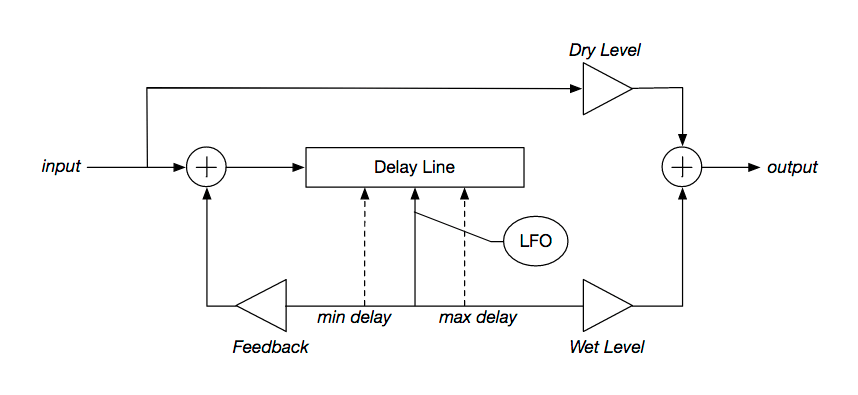

As with most processing effects, interesting results can also be obtained by choosing ‘outrageous’ extreme values for the different parameters of the signal network.Chris Loeffler | NovemA Brief History of Time-Based Effects- Chorus and Flanging (Part 3) Feeding the delayed signal back into the delay line increases the complexity and richness of the chorus effect.

The rand~ object sends out a signal of linear interpolation between random values (in the range -1 to 1) chosen at a specified rate this signal is appropriate for the type of modulation required for chorusing. This can be done by continual slight random modulation of the delay time of two or more different delay taps. The chorus effect is achieved by combining multiple copies of a sound - each one delayed and pitch shifted slightly differently - with the original undelayed sound. For a radically different effect, try some extreme values (longer delay times, more feedback, much greater chorus depth, very slow and very fast modulation rates, etc.). Experiment by changing the values for the different parameters. Send some sound into the audio input of the computer to hear the chorusing effect. In between those randomly chosen samples, rand~ interpolates linearly from one value to the next to produce an unpredictable but more contiguous signal. You can specify the frequency at which it chooses a new random value.

The rand~ object chooses random numbers between -1 and 1, but does so less frequently than every sample. What we really want is a modulating signal that changes more gradually, but still unpredictably. This white noise is not an appropriate signal to use for modulating the delay time, though, because it would randomly change the delay time so fast (every sample, in fact) that it would just sound like added noise. The noise~ object (introduced in Tutorial 3) produces a signal in which every sample has a randomly chosen value between -1 and 1 the result is white noise, with roughly equal energy at every frequency. A less predictable effect called chorusing can be achieved by substituting a random fluctuation of the delay time in place of the sinusoidal fluctuation we used for flanging. When we mix this signal with its original undelayed version, we create interference between the two signals, resulting in a constantly varying filtering effect known as flanging. We've already seen in the preceding chapter how slight pitch shifts can be introduced by varying the delay time of a signal. They're not all singing precisely the same pitch in impeccable unison, so the random, unpredictable phase cancellations that occur as a result of these slight pitch differences are thought to be the source of the chorus effect. Why does a chorus of singers sound different from a single singer? No matter how well trained a group of singers may be, they don't sing identically. MSP Delay Tutorial 5: Chorus The chorus effect


 0 kommentar(er)
0 kommentar(er)
